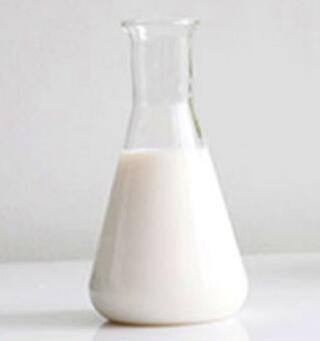Is synthetic latex harmful to the human body?
May. 20, 2025
What is synthetic latex
Synthetic latex is derived from petroleum and is a chemical product with a very low cost. Its price, feel, smell, and comfort are very different from natural latex. Its comfort mainly depends on the production process, the materials used, etc. Moreover, it is cheap and difficult to distinguish from natural latex in appearance.
Classification of synthetic latex
For example, styrene-butadiene rubber is a synthetic rubber formed by the copolymerization of styrene and butadiene, so it is called SBR; similarly, nitrile rubber is called NBR; chloroprene rubber is called CR, etc. China's naming method: For copolymers, copolymer rubber is suffixed after the corresponding monomer, such as butadiene-styrene copolymer rubber, referred to as styrene-butadiene rubber; for homopolymers, the word "poly" is prefixed before the corresponding monomer, and "rubber" is suffixed after the polymer, such as cis-1,4-polyisoprene rubber (referred to as isoprene rubber) cis-1,4-polybutadiene rubber (referred to as cis-butadiene rubber), etc. In addition, there is a popular naming method, which is to name the polymer by the unique elements or groups other than carbon and hydrogen. For example, the rubber formed by αω-dichlorohydrocarbon (or α, ω-dichloroether) and sodium polysulfide is commonly known as polysulfide rubber, and the rubber obtained by copolymerization of isobutylene and a small amount of isoprene is often commonly known as butyl rubber.
Monomer of styrene-butadiene rubber
Styrene-butadiene rubber (SBR), also known as polystyrene butadiene copolymer. Its physical structure properties, processing properties and product performance are close to those of natural rubber. Some properties such as wear resistance, heat resistance, aging resistance and vulcanization speed are better than those of natural rubber. It can be used in combination with natural rubber and a variety of synthetic rubbers. It is widely used in the production of tires, tapes, hoses, wires and cables, medical devices and various rubber products. It is the largest general synthetic rubber variety and one of the earliest rubber varieties to achieve industrial production. Butadiene styrene rubber is made of butadiene and styrene as the main monomers, with other auxiliary chemical raw materials. Under certain process conditions, it is first polymerized by emulsion method to produce butadiene styrene slurry. After removing the unconverted monomers in the slurry, it is then condensed and dried to produce the product rubber.
Featured content:Csp Encapsulation Silicone Trends to Watch in 2025

What is butadiene/styrene?
The English name is: 1,3-Butadiene or Butadiene, BD. It is a colorless gas with a special smell. It is slightly soluble in water, soluble in ethanol and methanol, and easily soluble in acetone, ether, chloroform, etc. It is a raw material for making synthetic rubber, synthetic resin, nylon, etc. The main preparation methods are butane and butene dehydrogenation, or separation from carbon four fractions. It is anesthetic, especially irritating to mucous membranes, and easy to liquefy. The critical temperature is 161.8 and the critical pressure is 4.26 MPa. It forms an explosive mixture with air, and the explosion limit is 2.16~11.47% (volume).
On October 27, 2017, the World Health Organization's International Agency for Research on Cancer published a preliminary list of carcinogens for reference. 1,3-butadiene is on the list of Class I carcinogens. Styrene (C8H8) is an organic compound formed by replacing one hydrogen atom of ethylene with benzene. The electrons of the vinyl group are conjugated with the benzene ring. It is insoluble in water, soluble in ethanol and ether, and gradually polymerizes and oxidizes when exposed to air. It is an important monomer for synthetic resins, ion exchange resins and synthetic rubber in industry. On October 27, 2017, the World Health Organization's International Agency for Research on Cancer published a preliminary list of carcinogens for reference. Styrene is on the list of Class 2B carcinogens. Is synthetic latex pillow toxic? From the above analysis, it can be seen that synthetic latex is actually a polymerization of butadiene and styrene. There will be residues of butadiene and styrene in its composition. It is on the list of carcinogens published by the World Health Organization's International Agency for Research on Cancer. In addition, synthetic latex is highly irritating and will also cause strong irritation to the respiratory tract. Is natural latex toxic? Natural latex comes from natural rubber trees. Natural latex is a viscous milky white liquid that looks like milk. It is an emulsion of rubber particles in a near-neutral medium. Latex bedding made of natural rubber has heat dissipation and breathability, and is porous. The bubbles are always filled with air, which can dissipate excess heat and moisture from the body during sleep, keeping the body refreshed and naturally improving sleep quality. Natural rubber is natural and environmentally friendly, with a comfortable and gentle nature. It will not cause allergies when in contact with the skin, nor will it have a pungent plastic smell. Latex is taken from natural plants and can automatically decompose and return to nature after several years or 4-6 months of exposure to sunlight, which fully complies with international environmental standards and rules.
115
0
0


Comments
All Comments (0)